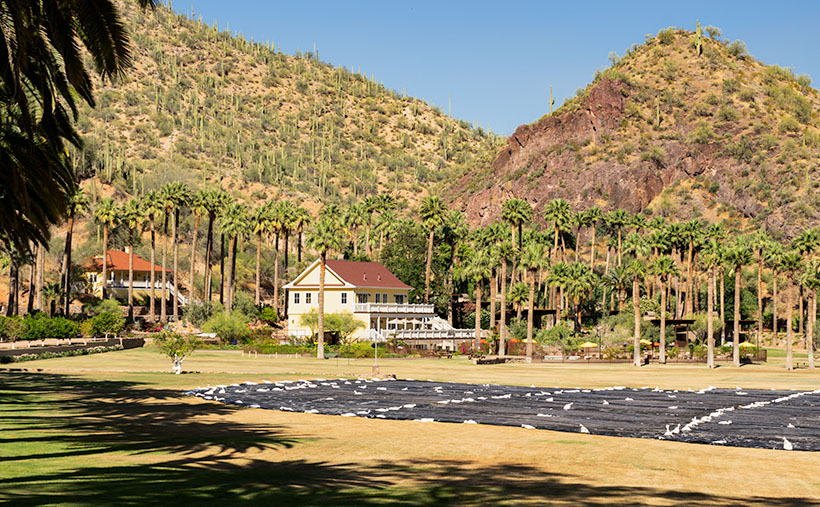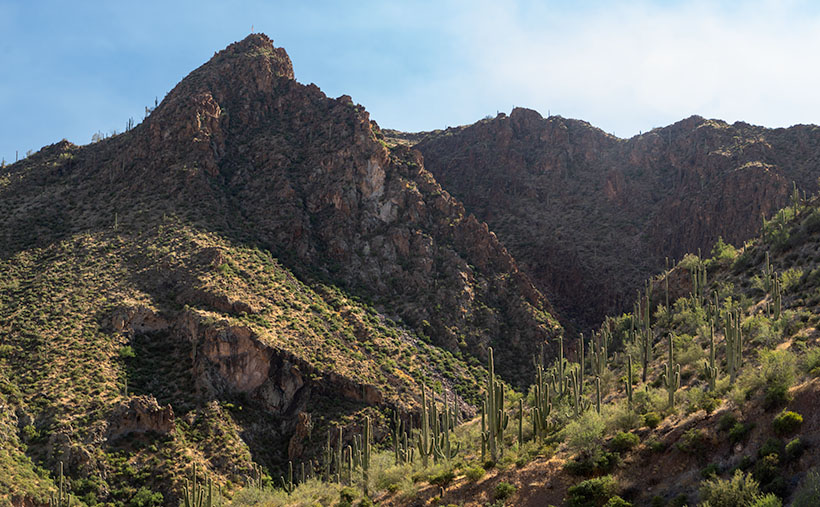
It doesn’t matter which way you travel on Castle Hot Springs Road, either clockwise or the other way, will get you to the historic retreat—the luxury resort for the rich and famous built-in 1896. Your choice of travel depends on whether you want to drive through the mountains via Morristown or north of Lake Pleasant via Castle Creek. As a history buff, I prefer the original route, but I also live closer to the old railroad depot, and I’m too lazy to drive that distance to Lake Pleasant.
After moving to Arizona, I heard stories of the ghost resort from friends, but I didn’t look at it for thirty years. After the last of my infamous station wagons was totaled while parked in the Sun City Boswell Hospital parking lot, we replaced it with my first SUV—Shadowfax. It was an Olds Bravada with ground clearance and four-wheel drive that was good enough to begin exploring back roads. One of my first outings was to Castle Hot Springs. As a film shooter back then, I didn’t have a perfect shot of the main house, so I didn’t bother taking any pictures.
There’s quite a bit of history that would make good stand-alone stories. Trivia like:
- The hot spring was found by Ft. Whipple Calvary soldiers tracking bandits.
- Frank Murphy—the Congress Mine owner—bought the land, built the buildings, and paid for the road.
- The resort thrived during the first half of the 20th Century, catering to the Roosevelts, Rockefellers, Vanderbilts, Wrigleys, Zane Gray, and Clark Gable (there had to be famous actresses who visited, too, but I didn’t discover any of their names).
- Murphy’s brother, when he was the territorial governor, turned the resort into Arizona’s Mar-A-Lago because winters were too cold in Prescott. And because Warren Murphy ran the state from here, Arizona’s first telephone was installed in the hall of the main building (I believe it survived the ’76 fire).
- The temperature of the hot springs water is 12oº, which is the same as every Phoenix household during summer.
There’s another more interesting story, however. The resort was dark during the Second World War because of rationing and shortages. After the war ended, Walter Rounsevel, owner and general manager, leased the property to the U.S. military as a recovery and rehab facility for injured officers. One of those officers was a young lieutenant whose back was injured after a Japanese destroyer rammed his PT boat. The officer’s name was John F. Kennedy, and he spent several months recovering at Castle Hot Springs, soaking in the springs, hiking trails, and golfing.

For its part in helping with the recovery of these servicemen, a special dispensation was given to Castle Hot Springs to fly an American flag 24 hours a day atop Salvation Peak. The flag was visible along the road before and after passing the resort, and I took several shots of it even though the sun was directly behind. My favorite version is this week’s featured image, which I call Salvation Peak Flag. Although it looks formidable, Salvation Peak is a smaller outcrop of Governors Peak, which is located within the Hells Gate Wilderness area.
You can see a larger version of Salvation Peak Flag on its Web Page by clicking here. Be sure to return next week when we present the final photo I made on my Castle Hot Spring Road outing.
Until next time — jw
